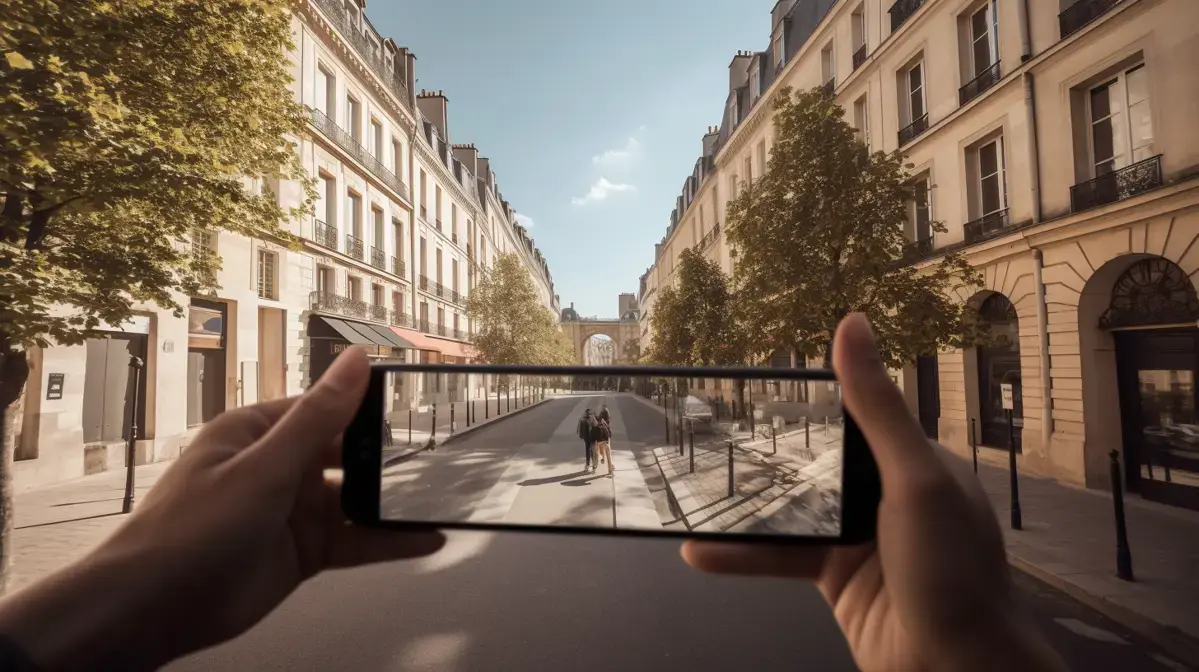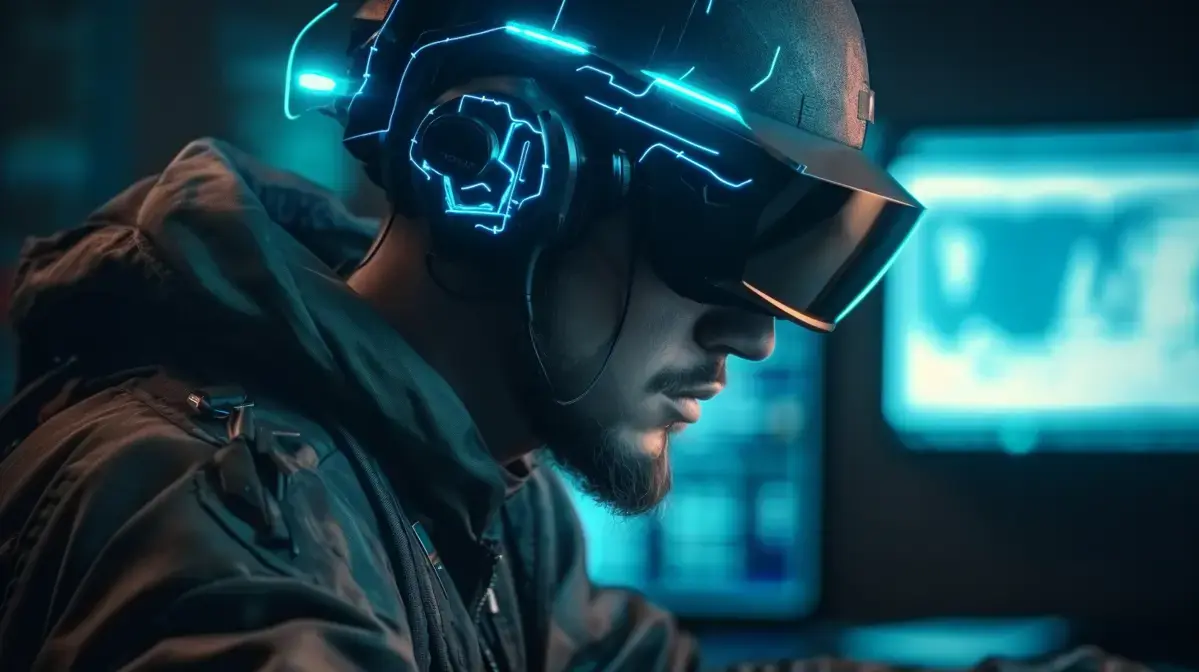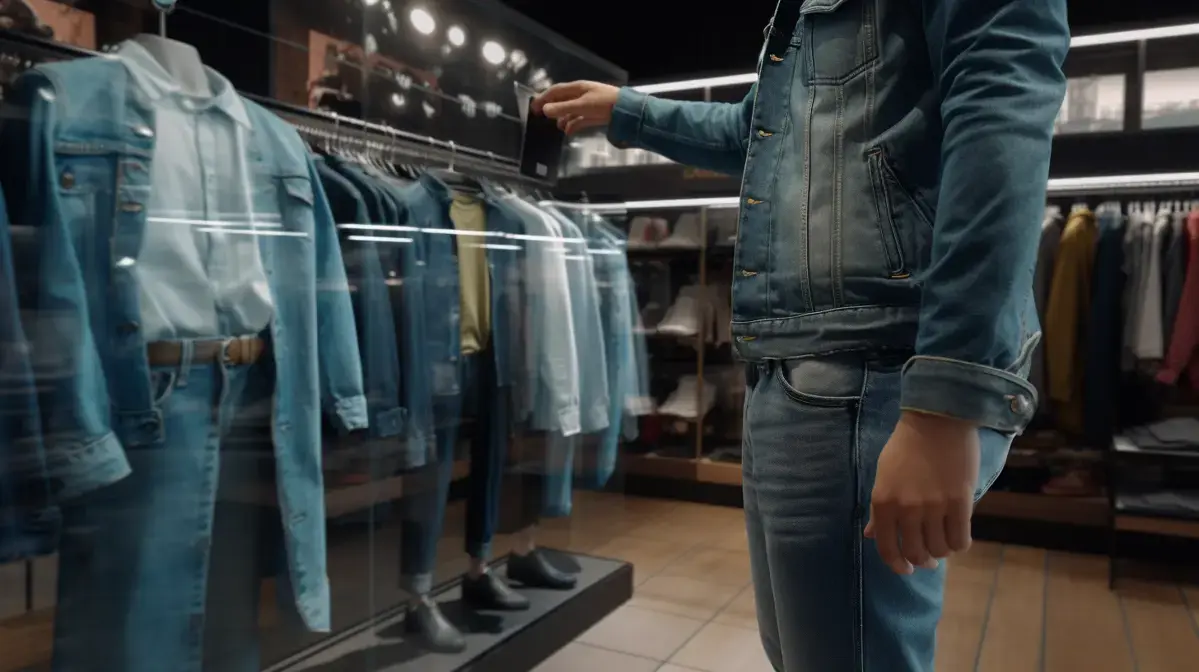Augmented reality (AR) technology is becoming increasingly integrated into the travel industry, offering unique and exciting opportunities for travelers. But it’s not just about entertainment – AR also has the potential to greatly enhance accessibility in travel.
With AR, travelers with disabilities can gain access to a wealth of information that might otherwise be difficult or impossible to obtain. For example, an app using AR could provide audio descriptions of historic landmarks or museums for visually impaired visitors. It could also help those with mobility issues navigate unfamiliar areas by providing real-time directions and even highlighting accessible routes.
In addition to enhancing accessibility for individuals with disabilities, AR can also benefit all travelers by making it easier than ever before to explore new destinations. By overlaying digital information onto real-world environments, users are able to see important details like restaurant menus and local attractions without having to search through guidebooks or websites.
Overall, augmented reality holds tremendous promise when it comes both enhancing accessibility in travel as well as providing more immersive experiences for all types of travelers alike.
Table Of Contents
- Key Points
- Introduction: Understanding Augmented Reality in Travel
- How Augmented Reality is Revolutionizing Accessibility for People with Disabilities
- The Benefits of Using Augmented Reality for Navigation and Directions while Travelling
- Interesting Facts
- Enhancing Cultural Experiences through Augmented Reality in Historical Sites and Museums
- Overcoming Language Barriers with the Help of Augmented Reality Translation Tools
- Improving Safety and Security While Travelling with the Aid of Augmented Reality Technology
- FAQs
- The Future of Travel: Predictions on How Augmented Reality will Continue to Shape the Industry
- Embracing Accessible Travel through Innovative Solutions like Augmented Reality
- Key Takeaways

Key Points
- Augmented reality can greatly enhance the accessibility of travel for people with disabilities.
- An AR-based app can provide real-time information about accessible routes, facilities and services in a new city or country.
- The use of AR glasses or headsets can help visually impaired travelers navigate unfamiliar environments more easily and independently.
- AR technology has the potential to revolutionize museum and monument visits by providing audio descriptions, translations, historical context etc. in an interactive manner for all visitors including those with disabilities.
Understanding Augmented Reality in Travel
Augmented reality (AR) is a technology that has started to grow exponentially. It’s one of the most exciting and innovative technologies in recent years, which is ideal for travelers since it provides an immersive experience while exploring new destinations. AR enables users to overlay digital information onto the real world, creating a unique mixed reality environment.
For example, when visiting a foreign city through an AR travel guide application with added functionalities like place recommendations and local insights can make your vacation more enjoyable. This may include historical facts about landmarks as well as significant restaurant suggestions within your area that provide tasty regional cuisine.
With augmented reality-powered enhanced tourism experiences, people can now fully immerse themselves in their destination by experiencing tourist sites and attractions from different angles before even setting foot on location. This can be achieved through virtual tours that are available online or through mobile applications like Google Earth or Trip Advisor.
How Augmented Reality is Revolutionizing Accessibility for People with Disabilities
Augmented reality (AR) is a technology that has been creating waves in the travel industry with its ability to enhance tourist experiences and provide unique perspectives. The fusion of digital information onto physical environments has opened up new vistas, allowing for a seamless blend between the real and virtual worlds.
As an AR expert, having spent countless hours experimenting with various systems and technologies, it’s exciting to see how AR is shaping up as a game-changer for the travel industry. From providing immersive navigation experiences within airports or train stations using head-mounted displays to enriching heritage tours with interactive content overlays on smartphones or tablets, there are endless possibilities.
One example of how AR can revolutionize tourism is by bringing history back to life through re-enactment simulations at historical sites such as castles or museums. For instance, when visiting Edinburgh Castle in Scotland, tourists can experience what it felt like during medieval times by using their smartphone cameras. This will reveal warriors walking around them as they explore different parts of this historic site.
Another emerging use case for augmented reality concerns language barriers. Visitors who may not be fluent in local languages can now benefit from instant translation services through wearable devices equipped with speech recognition software, making communication effortless no matter where you go.
Overall Augmented Reality opens many opportunities not just within tourism but across several other fields & industries; its potential seems limitless – especially considering advancements being made every day.
The Benefits of Using Augmented Reality for Navigation and Directions while Travelling
Augmented reality (AR) has become one of the hottest buzzwords in technology today, and for good reason. Imagine enhancing your travel experience by being able to see virtual elements in your physical world. This is precisely what AR can do- transforming the way people think about sightseeing, adventure and cultural immersion.
While there are boundless possibilities where Augmented Reality can transform every kind of travel experiences from backpacking trips through Southeast Asia or food tours across Europe It will be fascinating For Travellers worldwide who want something exceptional out their journey . By combining cutting-edge technologies alongside traditional touring means will alter Travel Industry completely.
Interesting Facts
- Augmented reality technology can enhance the travel experience for individuals with disabilities by providing audio and visual aids that help them navigate unfamiliar environments.
- In a survey conducted by the World Tourism Organization, over half of respondents with disabilities said they would be more likely to travel if accessibility information was readily available online.
- Airports such as Heathrow in London and Schiphol in Amsterdam have implemented augmented reality wayfinding solutions to assist travelers with visual impairments.
- The use of augmented reality technology is not limited to those with physical disabilities. It can also benefit travelers with cognitive differences who may require additional support or guidance while navigating new surroundings.
- In addition to improving accessibility, augmented reality apps can provide cultural context and historical information about landmarks, enhancing the overall traveler experience regardless of ability status.

Enhancing Cultural Experiences through Augmented Reality in Historical Sites and Museums
Augmented Reality (AR) has revolutionized the travel industry, giving travelers an immersive experience like never before. By merging digital elements with the real world, AR technology allows tourists to explore destinations in a whole new way.
With AR becoming more accessible than ever before through mobile devices such as smartphones or tablets, it’s now easy for anyone to have an enriched travel adventure. Apps like Google Translate utilize AR techniques, allowing users to visually translate signs in foreign languages into their native language in real-time.
AR also provides solutions for common issues faced while traveling. Getting lost or not finding your way around unfamiliar territory can be made easier by simply holding up your phone and following virtual directions overlaid on top of physical landmarks right in front of you.
From interactive museum exhibits incorporating augmented reality features to audio guides that offer deeper insights on historical sites, augmented reality can transform any vacation from good enough to unforgettable. For example, our traveler was left awestruck by the giant exhibit “Leonardo da Vinci” at the Louvre Museum in Paris. Equipped with cutting-edge augmented projection techniques, this exhibit offered object interpretations impossible during regular museum visits.
The future possibilities for this groundbreaking fusion between digitization and tourism are endless. It brings together fun entertainment aspects while providing educational value, surpassing even today’s wildest imaginations.
Overcoming Language Barriers with the Help of Augmented Reality Translation Tools
Augmented Reality (AR) is a technology that has been around for over two decades, but it’s still not mainstream. However, with the rise of smartphones and other devices that can support AR apps, more people are becoming aware of its potential.
An exciting development is the use of AR in navigation systems. Instead of trying to follow complex maps or directions from locals who may struggle with the language, augmented reality provides an intuitive visual guide overlaying real-world images. This allows travelers to easily understand their surroundings without getting lost.
The possibilities for augmented reality in travel are endless. Whether it’s exploring new destinations like museums full of interactive exhibits and virtual tours that offer unique experiences, finding hidden gems off-the-beaten-path through location-based recommendations based on previous user reviews, or discovering local festivals, markets, and events happening nearby, there’s no doubt that this application will make any traveler feel like they’re experiencing something truly magical.
Improving Safety and Security While Travelling with the Aid of Augmented Reality Technology
Augmented Reality in travel is the latest trend that has revolutionized people’s experience of exploring new places. By blending virtual information layers with physical surroundings, it allows travelers to immerse themselves in a digitally enhanced reality that takes them beyond what they can see and hear. The technology uses smartphones or AR glasses to display information about sights, sounds, and even smells at specific locations.
Another example comes from HoloLens headset sessions where we integrated Artificial Intelligence assistant capabilities directly into these devices so users could ask real-time questions about landmarks seen through cameras at reticulation points.
Augmented Reality is not just another fleeting fad but rather one which will keep growing year after year as its impact continues being felt worldwide – especially within the hospitality industry.
FAQs
1. What is augmented reality?
Augmented reality (AR) is a technology that overlays digital content onto the real world, enhancing the user’s experience of their surroundings.
2. How does AR improve accessibility in travel?
AR can provide visual aids and guidance for those with disabilities or mobility impairments, such as highlighting accessible routes and offering audio descriptions of points of interest.
3. What are some examples of AR being used in travel?
Some examples include apps that use AR to display information about landmarks or museums when users point their phone cameras at them, as well as navigation tools that superimpose directions onto real-world environments.
4. Are there any concerns about using AR in travel for accessibility purposes?
One concern is that not all travelers may have access to compatible devices or be comfortable using them. Additionally, reliance on technology could lead to issues if it fails or runs out of battery while traveling..

The Future of Travel: Predictions on How Augmented Reality will Continue to Shape the Industry
Are you tired of the same old travel experiences? Does traditional sightseeing no longer excite you? Then it’s time to immerse yourself in a whole new world of possibilities with augmented reality (AR) technology.
From enhancing historical sites with interactive displays and 3D models, to offering real-time translations for foreign languages and even enabling virtual try-ons for local fashion, AR has the potential to bring travel destinations alive in ways never before imagined. Picture standing within ruins from ancient civilizations as they get reconstructed around you or exploring a city’s hidden gems via GPS-enabled overlays on your smartphone screen – all while feeling like part of something incredible.
One particularly memorable experience was when I used my AR headset to explore Tokyo’s bustling Shibuya Crossing as though transported inside my very own video game; neon lights flashing overhead and crowds moving past me at lightning speed. It was an otherworldly moment that truly opened up my eyes (and imagination) about what kind of adventures we’ll be able to have in coming years.
So why settle for just photographs or generic souvenirs when traveling? With Augmented Reality technology at our fingertips, every trip is now an opportunity for exploration beyond expectations – bringing history alive again through layers upon layers of digital information superimposed over our physical surroundings.
Embracing Accessible Travel through Innovative Solutions like Augmented Reality
Augmented Reality, or AR for short, is a technology that has taken the world by storm in recent years. It involves overlaying digital content onto the real world using smart devices such as smartphones and tablets. By doing so, it creates an immersive experience that enhances our surroundings and provides us with endless opportunities to learn, explore and have fun.
For travelers looking to enhance their experiences on-the-go while exploring new places around the globe – AR is increasingly becoming one of their favorite tools. With just a few taps on their phones or tablets they can access relevant information about tourist attractions like historical monuments or museums directly from anywhere in front of them. Imagine walking around Rome’s Colosseum marveling at its grandeur while an app gives you insights into its construction history through augmented reality.
But Augmented Reality isn’t just limited to sightseeing; it offers much more than that. For example – hotel booking apps have started incorporating 360-degree videos offering virtual tours inside rooms making decision-making easier when choosing accommodation options before even getting there physically.
One such popular platform utilizing Augmented Reality for travel enthusiasts is TripIt App which lets you create custom travel itineraries where real-time updates are displayed graphically overprinted onto your itinerary plan, giving users superior control over navigating through unfamiliar territories effortlessly.
By embracing AR technology today’s explorers possess powerful tools right at fingertips – allowing them limitless possibilities not available before now.
Conclusion
Augmented reality in travel has the potential to revolutionize the way people with disabilities experience new destinations. It can provide real-time information about accessibility, help navigate unfamiliar terrain and even enhance cultural experiences. However, it is important that developers ensure their technology is inclusive and accessible for everyone regardless of ability or disability. By prioritizing accessibility in design and implementation, we can create a more equitable future of travel for all.
Key Takeaways
- Augmented reality technology can greatly improve accessibility for travelers with disabilities.
- The use of AR in travel can enhance the overall experience and make exploring new places easier and more enjoyable.
- Cities, tourist attractions, and transportation companies should prioritize integrating AR features into their offerings to better accommodate diverse groups of travelers.
- The development of user-friendly AR applications will be crucial in ensuring that everyone has equal access to information when traveling.





































